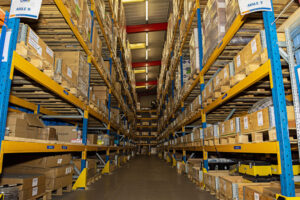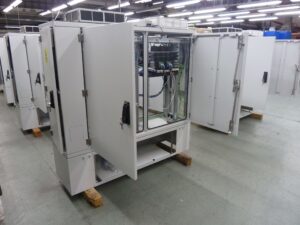
Hidden Heroes
Three Ways Managed Services Keeps Your World Moving Few industries are as critical to the future smart cities agenda as
It is fascinating to see how attitudes to the built environment are evolving. The drive for decarbonisation in the face of climate change is making us rethink how we live, work and play. That means designing spaces that deliver better outcomes for people and planet. CHH’s mission is to help connect the world for a smarter, sustainable future. As countries across the globe seek to transform urban living, our comprehensive range of connectivity solutions will help facilitate the shift to smart cities.
The built environment is directly responsible for around 40% of global energy use and is a major contributor to greenhouse gas emissions. Sustainable buildings | UNEP – UN Environment Programme. Due to their density, cities have a major impact on humanity’s carbon footprint and population growth and demographic trends means the problem will only get worse. The UN estimates that over two thirds of people will live in cities by 2030. Cities: a ’cause of and solution to’ climate change | UN News
The need to develop urban environments that minimise environmental impact and allow people to live their lives in a more responsible manner has forced politicians, planners and architects alike to go back to the drawing board when planning urban centres.
New era for city living
This change of mindset has led to the concept of so-called 15-minute cities. The idea is that the city’s residents do not need to travel on foot or bike for more than a quarter of an hour from their home to access essential services. Centres are designed to minimise traffic and support sustainable transport. Authorities around the world are embracing the concept as a way of confronting social and environmental challenges whilst supporting their Net Zero targets.
Models and frameworks for more responsible urban centres are ever evolving. There are numerous different approaches being explored, many of which are aligned with the drive for sustainable development.
According to the United Nations Economic Commission for Europe (UNECE), “A smart sustainable city is an innovative city that uses ICTs (Information and Communication Technologies) and other means to improve quality of life, efficiency of urban operation and services, and competitiveness, while ensuring that it meets the needs of present and future generations with respect to economic, social, environmental as well as cultural aspects.”
These cities will rely on sophisticated digital networks and connectivity solutions to make them function effectively. As technology has evolved, new opportunities have emerged to deliver the next generation of smart spaces.
Global roll out
Smart cities are being rolled out right across the world in different shapes and forms. The Middle East has been particularly proactive in exploiting technology to deliver mega centres literally from scratch.
Some of these projects are hugely ambitious in terms of scale and technical complexity. Examples include NEOM in Saudi Arabia, incorporating a zero-carbon hyper-connected city named The Line. Stretching across 170 km, the city will eventually be home to nine million people. There will be no roads or cars, it will run on 100% renewable energy and 95% of land will be preserved for nature.
The Line will be zero-carbon, have a high-speed rail link and provide residents with access to all daily essentials within a five-minute walk. To facilitate this, it will feature the most advanced technologies, including AI, autonomous transportation systems and smart homes. Home – The Line: The City of the Future (line-neom.com) There are many other projects in the pipeline which either involve developing new cities or transforming existing ones through smart solutions.
Connectivity backbone
Delivering these projects will require collaboration with global partners to apply the latest technological solutions to support sustainability and meet the needs of residents. Smart cities will rely on innovation and complex digital networks which drive resource efficiencies and support communication links.
CHH’s comprehensive portfolio of connectivity solutions can help countries make the shift to sustainable smart cities. We have been connecting people for more than three decades,
manufacturing best-in-class wire and cable solutions. Today our end-to-end value proposition ranges from design and engineering through to manufacturing, managed services and field support.
CHH is valued by its clients as a one stop shop for smart connectivity solutions. This puts us in prime position to support the transition to more sustainable urban living, particularly as we extend our global reach. Our new Networking, Cable & Connectivity Solutions division based in the Middle East has been set up to primarily help facilitate the development of smart cities and ensure that we are at hand to support some of the world’s most ambitious projects.
Watch this space to see the role CHH plays in securing a more sustainable outcome through smart connectivity solutions. We are excited about what the future has in store and will continue developing our value proposition to meet the ever-changing needs of our clients.

Three Ways Managed Services Keeps Your World Moving Few industries are as critical to the future smart cities agenda as

Who needs to belong anyway? By Liz Scott, Head of Design, Engineering and Manufacturing Have you ever felt as though

A recent meeting between Make UK and the Business, Energy and Industrial Strategy Committee revealed the true extent of the

Why connections are key to powering greater connectivity Henry Ford once famously said: “Coming together is a beginning, staying together
Have a question? Call us on +44 121 344 4229